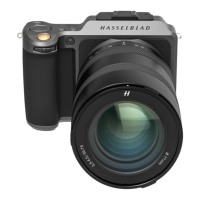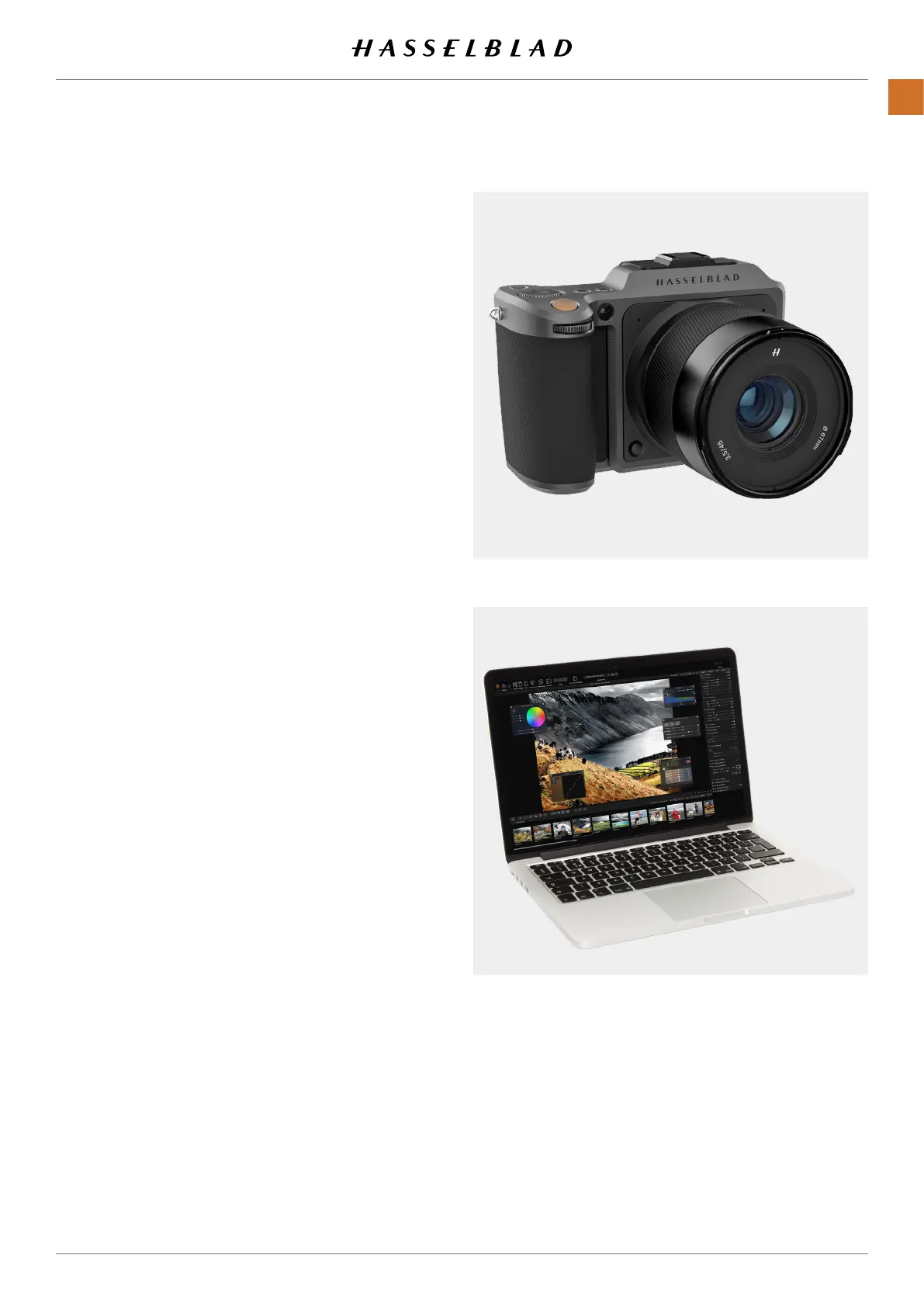X1D II 50C USER GUIDE www.hasselblad.com
134
PHOCUS
Contents
PHOCUS AND HASSELBLAD CAPTURE FILES
The X1D II can capture les and store them as Hasselblad
RAW format les or Hasselblad RAW + JPEG formats simulta-
neously.
Hasselblad RAW les are initially stored in the 3FR format
which is a proprietary Hasselblad format for the temporary
storage of captures. A 3FR le contains the complete digitized
raw image exactly as it was captured by the camera. 3FR
information requires further computing power (typically by
way of Phocus) to obtain complete development. If developed
in Phocus, 3FR les become Hasselblad 3F les – denoted
by each le now bearing the sufx “.fff”. If developed by
other RAW processors, the 3FR les are not converted to 3F
but can be exported directly to TIFF and PSD according to
requirements.
When working tethered to Phocus or Phocus Mobile 2, 3FR
les are automatically processed and stored in the back-
ground on a computer appearing as 3F les on the hard disk
ready for selective adjustment and export. 3FR les stored on
a SD card can be processed using:
Hasselblad Phocus
Adobe Camera Raw
Adobe Lightroom
Capture les can be stored as 3FR les (from a SD card) for
later processing in Phocus or other software, or they can be
stored as 3F les (as a result of tethered shooting or 3FR les
processed and converted in Phocus). In all cases if you keep
the original 3FR/3F les, you will also retain the possibility of
reprocessing them in the future in later versions of Phocus or
other software to take advantage of eventual improvements
and developments.
Mixed formats
Phocus can also process most other capture formats, generic
and proprietary. This means you can include other formats in
your normal Phocus workow if you choose. Or if you prefer,
you can include Hasselblad les in Adobe / Apple workow as
stated above.
Note!
For best possible image result, use Hasselblad Phocus
Software. Other Digital Image Software can give you a
similar result, but not exactly the same as Hasselblad Phocus
Software.

